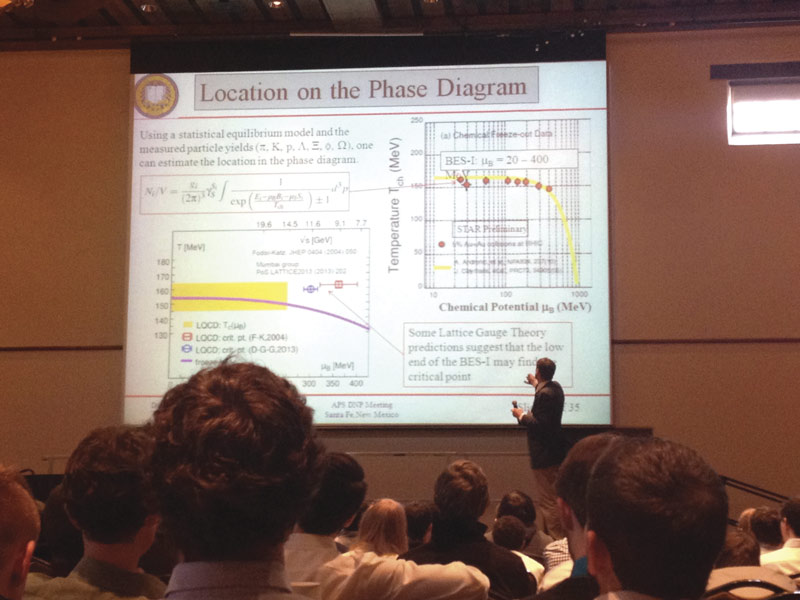2015 Fall Meeting of the American Physical Society Division of Nuclear Physics
October 28, 2015 to October 31, 2015
Sante Fe, NM
Meeting host: By:Hannah Hamilton
SPS Chapter:

The first session I attended at the American Physical Society’s Division of Nuclear Physics meeting was “The Future of Nuclear Physics I.” It started with a talk by Donald Geesaman of Argonne National Laboratory, who presented the long-range plan of the Nuclear Science Advisory Committee. It was reassuring to hear a timeline suggesting that nuclear physics will continue to be a rich field of study throughout my future doctoral work.
I owe my conference experience to the careful planning of Warren Rogers of Westmont College, who each year arranges the Conference Experience for Undergraduates (CEU). The CEU hosted about 150 undergraduates, mostly juniors and seniors, who have conducted research in nuclear physics. It includes a poster session in which undergraduates share their research with nuclear physicists already established in the field. That poster session was my primary motivation and the enabling factor for attending this conference.
Seeing how receptive nuclear physicists are to undergraduates and how interested they are in our research was great. Meeting other undergraduates and learning about their work was also worthwhile.
The CEU provided a great networking opportunity, including an ice cream social that allowed us to meet other like-minded students in a nonacademic environment.
It also provided talks catered to the physics knowledge of undergraduates. One such talk, “Exploring the Phase Diagram of QCD,” was given by Dr. Daniel Cebra of the University of California at Davis. I found his talk particularly interesting because of how closely tied it was to research I had participated in over the summer. Much of his talk consisted of research at the STAR detector, located at the Relativistic Heavy Ion Collider at Brookhaven National Lab. My research concerned the PHENIX detector at the same collider. The subject matter, as well as his enthusiasm, made for quite an enjoyable talk.
We were also able to attend a fair that exhibited around a dozen physics graduate schools. It was beneficial to talk to faculty and students from the schools, as we were able to hear firsthand what being a physics graduate student entails. In fact, I got to visit with an alumnus from my college who continued his studies at one of the represented graduate schools. //
Areas of Alignment: Career Resources: Scientific Categories: